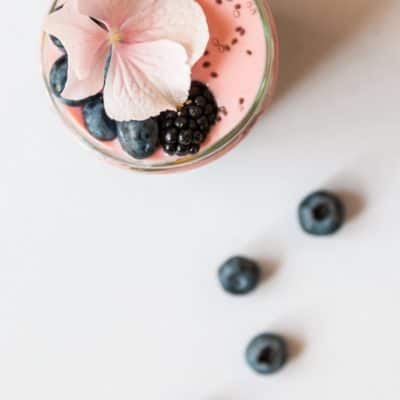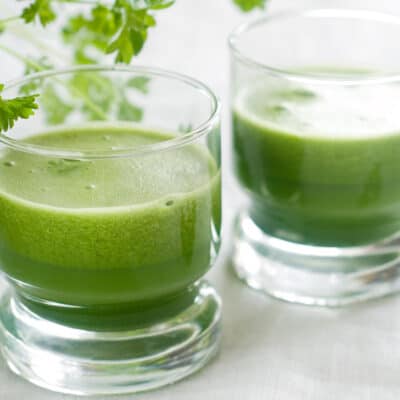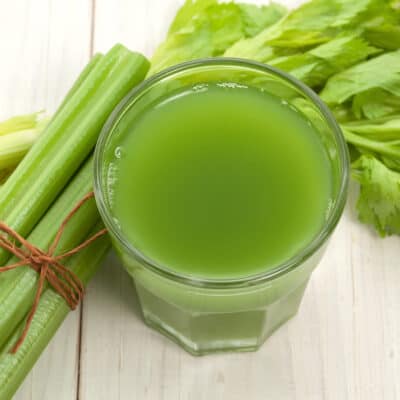What’s in your home that could cause cancer?
In 2019, it is estimated that almost 2 million Americans will have been diagnosed with cancer. As science continues to try to unravel the mystery behind cancer, more and more is coming to light about what is in the products we use every day that could contribute to this horrible disease. Why not do all we can to decrease that risk?
There is a long list of possible carcinogens, so the following is not by all means an exhaustive list. This is a resource to start educating yourself and can be used as a jumping-off point for cleaning toxins out of your home. Maybe you start with focusing on one area for one week, or one month, and then move onto the next area. Maybe you want to clean house entirely and do them all at once! Here are the top 5 areas to focus on.
Scented Products, Air Fresheners, and Cleaning Products
Did you know that companies do not have to disclose all the ingredients in their products? Vague ingredients such as “fragrance” on a label can mean up to even one hundred harmful chemicals (such as phalates) concocted to appeal to your sense of smell or sight – but are harmful to your body. Endless products, including laundry detergent, hand & dish soap, air fresheners, candles, toilet cleaners and more are scented.
What’s the harm? The undisclosed mix of “fragrance” in particular have been associated with skin issues, allergies, respiratory conditions and potential harm to the reproductive system. One study found that even products claiming to be “green” or “natural” have been found to contain at least one potentially hazardous chemical – and on average, contained about 17 undisclosed toxic chemicals. (Other studies have similar findings.) In another study, of six popular products studied (3 air fresheners and 3 laundry products), a total of nearly 100 volatile organic compounds (VOCs) were identified – and none were listed on the label. Of the VOCs identified, ten are regulated as toxic or hazardous by federal law, with three of them as Hazardous Air Pollutants (HAPs). Many VOCs are carcinogenic and should be avoided as much as possible.
THE ALTERNATIVE:
If you’re wanting your home to smell lovely, there are many options! My favorite is diffusing essential oils. They smell amazing and also have added health benefits – such as decreasing inflammation, improving mood, reducing stress, and even cleaning the air quality of your home! I love clary sage*, bergamot*, and orange* – all of which smell lovely and are uplifting. I love this diffuser and the Primavera brand of essential oils for their purity and clean extraction process. Check out my favorite oils to diffuse in this post. Instead of dryer sheets, use wool balls and add a drop of your favorite essential oil on them before tossing in the dryer. This laundry detergent is great – plant-based and no funky fragrance. For more household cleaning tips & natural alternatives, check out this post. Not sure where to start with essential oils? Here’s my beginner’s guide. Want to improve your indoor air quality? This post is for you.
*Use the coupon code amberbodilyhealth for a discount at checkout.
Water
Even though lead isn’t supposed to be a concern for your home anymore, in 2012 the CDC found 32% of all U.S. houses to have some lead paint, and 22% to have significant lead-based hazards. The water that comes into your home can still contain harmful chemicals that are detrimental to your health and have been linked to cancer. After all – gross as this sounds – water is often recycled toilet water and/or is contaminated by toilet water. This has been a concern since 1999 when the Environmental Protection Agency alerted the public to the matter, inciting a flurry of research to be done. This study found pharmaceuticals in tap water, including atenolol (a beta-blocker), carbamazepine (an anticonvulsant), gemfibrozil (an antilipidemic), meprobamate (an antianxiety medication), and phenytoin (an anticonvulsant). The concentrations are very low – but low amounts can build up in the body over time, especially if that is your main source of water. Research has also found very small amounts to have a variety of significant effects for children, including cognitive delay, attention deficits and impulsivity, hyperactivity, acute cardiovascular responses to stress, and endocrine and reproductive system disruption.
Want to know exactly what’s in your water and if it can harm you? Put in your zip code on the EWG’s tapwater database and see how your local facility complies with health standards. It’s not uncommon to find chemicals in your water that can cause cancer (such as bromodichloromethane, chromium, dibromochloromethane, and more – many of which are common byproducts from chemicals used in an effort to disinfect drinking water, but which have been shown to cause cancer and are common U.S. water contaminants.)
THE ALTERNATIVE:
A great way to get pure, clean water is to use water filters in your home. EWG has a fantastic Water Filter Guide that can help you choose one that is the best fit for you. In our house, we use Berkey filters for our drinking water but also on our faucets and shower heads – even if not ingested, chemicals in the water can still be absorbed into the body through the skin. The best filters are the ones that remove 99% of the lead from your water. I wrote more about what’s in our water and what to do about it here.
Here are some other common ways to take action:
- Run your faucet in the mornings to flush out the lead that has accumulated in the water overnight
- Use only cold water for cooking
- Be diligent about replacing old water pipes
- Get involved in community groups raising awareness to local health departments and water companies about the dangers in your local water
Household Cleaning Products
Cleanliness, or chemically-ness? Make sure you know what’s in your cleaning products! Any products that have strong fumes – whether it smells good or not – should be avoided. A growing body of research is linking these fumes with the development of respiratory conditions and asthma, and triggering existing asthma. It is also common for products (particularly found in laundry detergent) to be laced with 1,4-dioxane, which is carcinogenic. Many products also contain preservatives that release low levels of cancer-causing formaldehyde (sometimes called formalin). One such preservative is called bronopol (also called 2-bromo-2-nitropropane-1,3-diol), used to kill bacteria in the product and extend shelf life. Women who reported the greatest use of cleaning products (top 25%) were twice as likely to have been diagnosed with breast cancer than those reporting the least use (bottom 25%). The link between cleaning products and cancer is only emerging, but definitely becoming clear.
THE ALTERNATIVE:
Use simple, natural cleaning products with few ingredients. Vinegar does wonders as an all-natural cleaner, and often works better! Baking soda is a fantastic deodorizer and does a great job scouring tubs clean. I also like a lot of Aunt Fannie’s cleaning products, such as her Cleaning Vinegar all-purpose cleaner and the Cleaning Vinegar Wipes (great alternative to the toxic Clorox/Lysol wipes). Branch Basics also has many fantastic products (I am just not a fan of their handsoap). Read more about natural cleaning solutions in this post.
Personal Care Products (Including Cosmetics)
People say “beauty is pain,” but what if beauty means cancer? Dr Paula Johnson, the leader of the California Safe Cosmetics Program at the California Department of Public Health and lead author of a systematic review of chemical safety, said: “Consumers generally seem to believe that products available for purchase are proven to be safe, and that the government would prevent unsafe products from being sold to us. This is not true. ..Products may contain ingredients with very limited safety testing or, for example, no data on reproductive effects from prenatal exposure. Agencies should adopt systematic review methods to evaluate the toxicity of chemicals. The public could greatly benefit from this, in terms of health and simply from a consumer right-to-know perspective.”
Your skin absorbs everything that is left on its surface. Your skin is your largest organ. Because it is on the “outside” of your body, it is often forgotten that it is still an organ. If any organ is regularly coated with toxic substances, problems will inevitably begin to arise. Be aware of everything, including soap, lotions, deodorant, makeup, sunscreen, shaving cream, aftershave, and more.
Here are the top 5 cancer-causing chemicals to look out for in personal care products (taken from the EWG website: view the full list here):
Butylated hydroxyanisole (BHA)
The National Toxicology Program classifies BHA as “reasonably anticipated to be a human carcinogen.” In animal studies, BHA produces liver damage; causes stomach cancers such as papillomas and carcinomas; and interferes with normal reproductive system development and thyroid hormone levels. It is found in food, food packaging and personal care products sold in the U.S.
Coal tar hair dyes and other coal tar ingredients (including aminophenol, diaminobenzene and phenylenediamine)
Coal tar, a byproduct of coal processing, is a known human carcinogen, according to the National Toxicology Program and the International Agency for Research on Cancer. Europe has banned many of these ingredients in hair dyes. Although FDA sanctions coal tar in specialty products such as dandruff and psoriasis shampoos, its long-term safety has not been demonstrated.
Formaldehyde
A potent preservative classified as a “known human carcinogen” by the International Agency on Research on Cancer. Formaldehyde, also an asthmagen, neurotoxicant and developmental toxicant, was once mixed into many personal care products as an antiseptic. This use has declined but many pharmaceuticals include formaldehyde in their routine products – including ones we give to babies and children – so always check the ingredients. But some hair straighteners contain substantial amounts of formaldehyde and release potentially toxic fumes during their use. New furniture such as kitchen cabinets release formaldehyde – make sure to keep your house well ventilated (better yet, get an air-exchange system installed for 24 hour ventilation).
Parabens (specifically propyl-, butyl-, isopropyl-, and isobutyl- parabens)
Parabens are widely used as preservatives in cosmetics. The CDC has detected parabens in virtually all Americans. According to the European Commission’s Scientific Committee on Consumer Products, certain parabens (propyl-, butyl-, isopropyl-, and isobutyl-), may disrupt the endocrine system and cause reproductive and developmental disorders.
Parabens have also been found in the breast tissues of women with breast cancer, with over 60% of the samples containing 5 different parabens. You can find these in many creams and other personal care products. Frighteningly, you can even find these in over the counter kids cough syrups and baby teethers – be vigilant about ingredient checking!
Petroleum distillates
Petroleum-extracted cosmetics ingredients may cause contact dermatitis and are often contaminated with cancer-causing impurities. They are produced in oil refineries at the same time as automobile fuel, heating oil and chemical feedstocks.
THE ALTERNATIVE:
In September of 2019, The Personal Care Product Safety Act was introduced to modernize the FDA’s approach to regulating personal care products – including requiring companies to make sure their products are safe before putting them on the market. The laws regulating these companies haven’t been updated in over 80 years, meanwhile the chemicals created to put in products have grown exponentially.
As far as makeup goes, focus on taking care of the skin on your face – then eventually there may not be a need for makeup, or at least not as much. I go into great detail into how to transform your skin in my online course Goddess Glow. You can also see the very specific recommendations I make for alternative products in the course. However, I love the facial products and essential oils from Goddess of Spring. There are many clean products on the market today – you just have to educate yourself on what to look for. I highly recommend using the Environmental Working Group’s Skin Deep database to see if any of the products you’re using have chemicals to watch out for.
Pest & Weed Control Products
The research is undeniable far and wide of the enormous detrimental health effects of pesticides. Over the last several years, the pesticide RoundUp with the main ingredient glyphosate has been linked to causing cancer. For glyphosate in particular, many are calling for more independent research to be done – but in 2017, California added it to its list of chemicals that cause cancer. The use of glyphosate has been banned in over two dozen countries – so you may want to rethink its use on your yard or your food.
Aside from crop-spraying and weed-killing, products related to other types of pest control are worth a closer look. Ant-spray, bug spray, spider-spray, tick and mosquito yard treatments etc. all have toxic ingredients that should be avoided, particularly while pregnant. This 2017 study found exposure to pesticides while pregnant was associated with a 1.4x risk of childhood brain tumors (having had a baby with tumors before I knew about all this – it is nothing I would wish on anyone else!). Adult women who had been exposed to pesticides while in the womb were four times more likely to be diagnosed with breast cancer.
THE ALTERNATIVE:
If you routinely have your home sprayed to avoid weeds or pests, I encourage you to rethink your options. A friend of mine laboriously tended to an organic garden, only to include it in her home’s area of pest control. When I brought up that her beautiful garden was being sprayed with pesticides, she replied that she hadn’t even given it a second thought – it was just something she always did for her home! All her hard work for an organic garden was gone. There are many pest-control and weed-control options, including vinegar for weeds, coffee grounds for ants, and more. This article has great suggestions (although I cannot personally recommend #9). If you’re not ready to give up your protection against mosquitos, check out my all-natural DIY bug spray that we use every time we go camping. If you’ve been exposed to pesticides, here’s some great ways to get them out of your system. If you can, go organic as much as possible. Worried about the cost? Here’s 15+ cheap and easy ways to go organic.
Little By Little
It may feel overwhelming to think about “swimming in toxic soup,” as some have put it. But the more you become aware of what is in your environment that could be making you sick, the better equipped you are to change things. If it feels like too much, start swapping out one product at a time. If you’re ready for a sweeping change, go for it! Less chemicals is never a bad thing. Cheers to being a little more clean, on the inside and out!
Ignite the Healer within,
Amber Bodily
P.S. If you want to see all of my best recommendations for someone on a cancer journey, check out my online course The Cancer Warrior: Building Resiliency The Natural Way.









